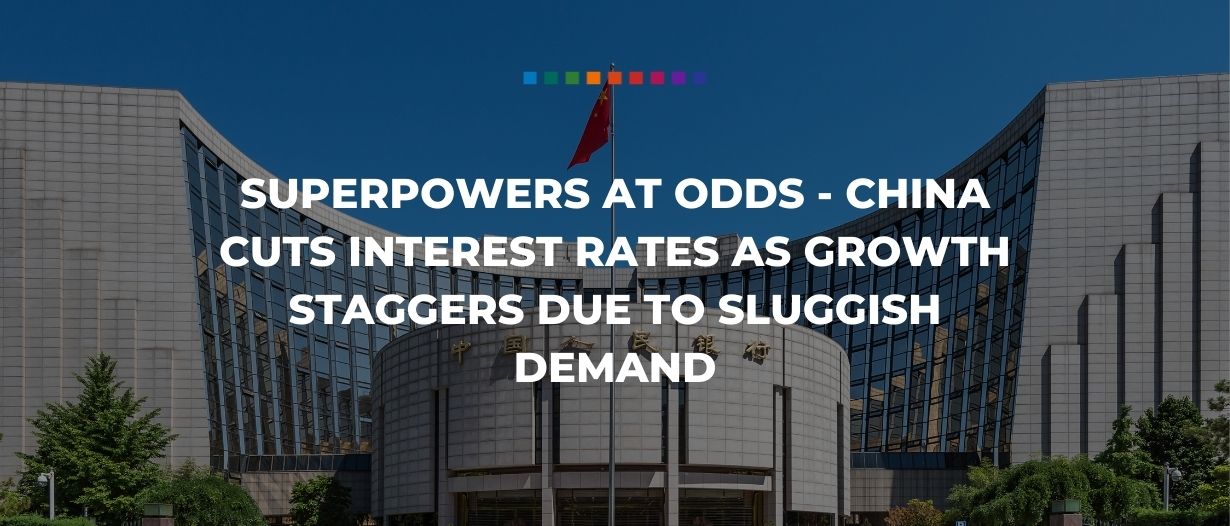China has responded to slowing growth with a surprise interest rate cut, in an attempt to stimulate domestic demand and retail spending.
In a People’s Bank of China (PBOC) decision published today, China’s central bank has chosen to cut rates for the first time since April 2020, following the early shocks of the COVID-19 pandemic.
The PBOC cut its one-year loan prime rate (LPR) to 3.8%, down from 3.85% in December 2021.
Seen as the de facto benchmark rate for lending in China, the LPR is set monthly by 18 banks that submit quotes on top of the PBOC’s medium-term lending facility (MLF) rate.
Additionally, the PBOC cut its one-year MLF rate from 2.95% to 2.85%, which will affect 700 billion yuan ($110 billion) of medium-term loans to financial institutions.
And the PBOC also cut its seven-day reverse repurchase rate from 2.2% to 2.1%.
In terms of quantitative easing, the PBOC will inject an extra 200 billion yuan ($31.5 billion) of medium-term cash into China’s financial system.
???????? #China Cuts Policy Interest Rate for First Time Since April 2020 – Bloomberg
— Christophe Barraud???? (@C_Barraud) January 17, 2022
*#PBOC net injected 200 billion yuan of medium-term loans
*Link: https://t.co/updPcNmBkf pic.twitter.com/vdysTJKYcs
China’s end of 2021 – jogging to the finish line
The PBOC’s rate hike comes in response to new data from China’s National Bureau of Statistics, showing that the country’s GDP grew by 4% year-on-year in Q4 2021.
China’s Q4 growth exceeded the expectations of some economists, but it was nonetheless significantly slower than its Q3 growth of 4.9%.
In one of the most worrying findings from China’s Q4 data, retail sales growth fell to 1.7% in December, below expectations of 3.7%.
Overall, China’s economy grew by 8.1% in 2021, which puts it comfortably ahead of its G7 rivals for the year.
But the Q4 figure was China’s slowest growth in a year and a half, despite the low baseline set by the pandemic-induced collapse of 2020.
The PBOC charts its own course
With other central banks now raising rates and reducing quantitative easing to combat inflation, the PBOC is looking to take an opposite course to stimulate demand.
In December last year, for example, the Bank of England (BoE) raised its benchmark interest rate for the first time since August 2018, from 0.1% to 0.25%.
Likewise, this month the US Federal Reserve said it may need to raise rates “sooner or at a faster pace” than initially expected, with financial markets now expecting several US rate hikes by the end of 2022. (Jamie Dimon, CEO of JP Morgan, has said that he is expecting six or seven.)
China’s economic outlook has been further damaged in 2021 by Beijing’s regulatory crackdown on the country’s tech and IT industries, and the growing contagion of the collapse of the Evergrande property giant.
Additionally, China is struggling to contain an outbreak of the Omicron variant, which has caused further disruptions to supply chains and shipping.
In what some economists are now seeing as the bust following the bounceback of 2021, sky-high shipping rates are also beginning to reverse, indicating sluggish demand in international trade.
The Baltic Exchange Dry Index, for example, has been in freefall since October 2021, falling to its lowest level since March 2021, after a 46.3% surge last year.
Baltic Dry Index continues to fall now at it's lowest levels since March of 2021. Seasonal weakness Jan-Feb. Those not familiar w/ this index it's a benchmark for the prices of moving raw materials via sea. Index takes into acct different shipping routes for diff commodities. pic.twitter.com/SDrzrvNMKp
— Darin D. Fessler ???????? (@DDFalpha) January 14, 2022
























